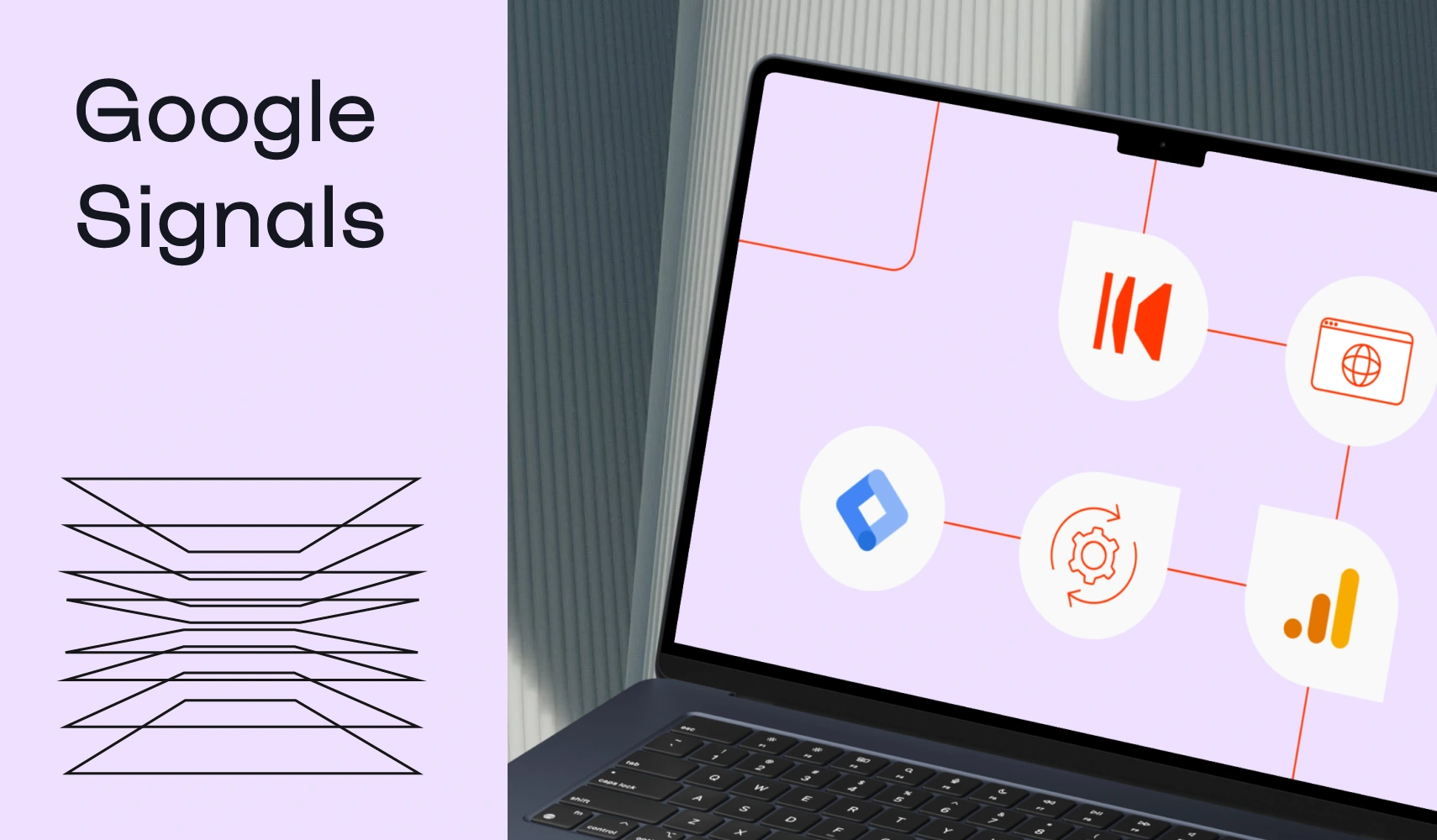Technology has come a long way since the days of the first analytics tools, and today there are more features than ever.
Google Signals is not entirely new; it was first introduced in Universal Analytics. With the arrival of Google Analytics 4 it has evolved and become even better.
But, what is Google Signals and how can it be useful (or not)? Should you even use it or know what it means? We will dive deeper into these issues in this article.
What are Google Signals?
Introduced in 2018, it is a Google Analytics feature that allows you to track users across devices on websites and apps where they are logged in with their Google Accounts and have activated Ad Personalization.
By linking logged-in users with collected data i GA4, it becomes possible with remarketing across multiple devices and export important events (also called conversion events) to Google Ads. All this data is session-based.
The main purpose of Google Signals was to address the increasing challenges in measurement given growing privacy online, and GDPR. Compared to third-party cookies, it aggregates personal user data so that it is anonymized and not processed by third parties.
However, it still provides information about what users do on the website.
It is important to note that when GA4 is connected BigQuery, exports the event data associated with pseudonymous cookies, which means that the same user is counted multiple times across different devices. This means that there will be a difference between the data you see in GA4 and in BigQuery.
Google Signals in GA4: Features Explained
Google Signals offers four key features when enabled:
1. Reporting across multiple units
This enables reporting across platforms by linking data about devices and activities from different sessions if used User ID. This provides an understanding of what a user has done from start to finish. So, from having found your website until it has converted.
This cross-device activity is tracked when users are signed in to their Google Accounts on the following devices:
- Google Chrome
- Google Chrome browser
- Other browsers
- Clients and other apps that require a Google Account
- Android devices
- iOS devices (For iOS 14+ you must use User ID to track across multiple devices)
2. Remarketing
You can create remarketing audiences in Google Analytics 4 and share them with your linked advertising accounts in Google Ads and other Google Marketing Platform (GMP) advertising products.
This makes it possible to serve ads in remarketing campaigns across devices to users who have enabled ad personalization.
3. Advertisement reporting
This gives you a more holistic view of a user's customer journey and interactions with ads. For example, if a user sees your ad, visits your website on their computer, then comes back and completes a purchase via their mobile phone.
4. Demographics and interests
GA4 collects data related to demographics and interests when Google Signals are enabled, which is possible through device identifier and users who are logged into their Google accounts with "Ad customization" enabled.
If you disable these functions, remarketing will not be possible, and conversion modeling in linked Google Ads as well as Search Ads 360 accounts are also negatively affected.
How to enable Google Signals
To enable Google Signals, you need editor or administrator access in GA4. After logging into your GA4 property, follow these steps below:
Go to Administrator → Click on Data collection → Enable Data collection with Google signals.
If you disable collection for a region, GA4 will retain all historical data that you have collected based on your data retention settings, but no new data will be collected from the time of the change.
If you disable the collection of Google Signals data, you will lose access to audiences based on that data, ad reporting, and demographic and interest information.
If you use a server-side tracking with Google Tag Manager, you need to configure it differently.
Here is a guide from Google to get started.
Uses of Google Signals
There can be several uses depending on what you want to achieve, but it is not only limited to them. How you use the available data is entirely up to you.
Insights
- Number of users vs. devices: Get a more accurate picture of how many unique users are visiting your site, instead of just seeing the number of devices.
- Cross-device customer journeys: Follow users' steps through your website, regardless of the device they're using.
- User behavior: Understand how different user groups behave on your website and identify the most valuable segments.
- Cross-device campaign performance: Evaluate the effectiveness of your marketing channels and campaigns across devices.
- Remarketing audiences: Reach users with relevant ads across multiple devices and increase the chance of conversion.
Should you enable Google Signals?
Until a few months ago, enabling Google Signals meant that it would be part of the selected The reporting identity, which affected how the data was displayed to users through something called Thresholding.
Then things changed, and you could choose whether or not you wanted Google Signals to be part of your reporting identity.
Finally, Google decided to completely remove Google Signals from the reporting identity, which solved the thresholding problem altogether.
However, using Google Signals means that you must have all the necessary privacy and consent settings in place and let your website visitors know that their data is being collected and how it is being used. For this purpose you should have one privacy policy on the website that includes information about this feature and how it collects personal data. Google Consent Mode and one Consent Management Platform (CMP) that displays a consent banner on your website, enabling users to give their consent to this type of data collection.
It is also a good idea to consult your legal team regarding the collection and storage of user data depending on the regions or countries in which you operate.
Summary
Google Signals is a feature that is here to stay. It will continue to improve to offer more accuracy and value – we hope at least.
In this Google Signals article, we have covered what Google Signals is and its important features. We've also looked at how to enable it from the interface of your GA4 property.
We learned about some uses and how they can be beneficial to us, but that's not all - how you use the available data also depends on you and your business model.
Finally, we discussed some legal aspects and requirements of using Google Signals and why it is important to involve your legal team.
We also addressed why it is more important than ever to have a privacy policy, a cookie policy.




